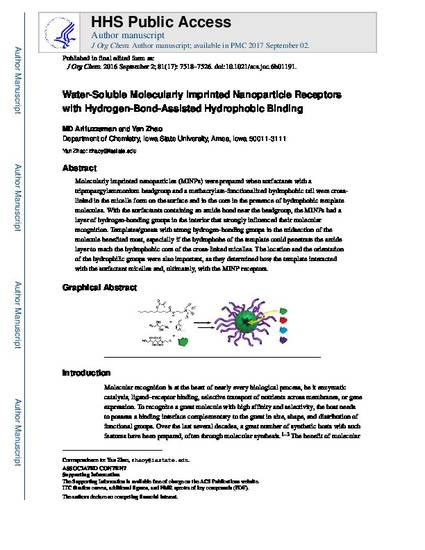
Molecularly imprinted nanoparticles (MINPs) were prepared when surfactants with a tripropargylammonium headgroup and a methacrylate-functionalized hydrophobic tail were cross-linked in the micelle form on the surface and in the core in the presence of hydrophobic template molecules. With the surfactants containing an amide bond near the headgroup, the MINPs had a layer of hydrogen-bonding groups in the interior that strongly influenced their molecular recognition. Templates/guests with strong hydrogen-bonding groups in the midsection of the molecule benefited most, especially if the hydrophobe of the template could penetrate the amide layer to reach the hydrophobic core of the cross-linked micelles. The location and the orientation of the hydrophilic groups were also important, as they determined how the template interacted with the surfactant micelles and, ultimately, with the MINP receptors.
Available at: http://works.bepress.com/yan_zhao/61/

This document is the Accepted Manuscript version of a Published Work that appeared in final form in Journal of Organic Chemistry, copyright © American Chemical Society after peer review and technical editing by the publisher. To access the final edited and published work see DOI: 10.1021/acs.joc.6b01191. Posted with permission.